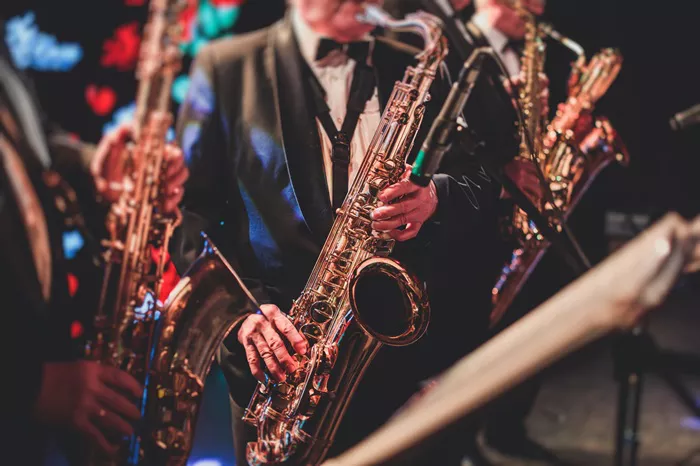Music is a complex tapestry woven from various threads of cultural, historical, and stylistic influences. Understanding the origins and evolution of genres like country, hip hop, and R&B requires delving into the intricate interplay of musical styles that preceded them. This article explores how blues and jazz, two foundational genres, have significantly contributed to the development of country, hip hop, and R&B. By tracing the historical pathways and examining the characteristics of these genres, we can appreciate the rich legacy they impart to contemporary music.
I. The Foundations: Blues and Jazz
1. The Birth of the Blues
Blues emerged in the late 19th and early 20th centuries in the Deep South of the United States. It originated from African American spirituals, work songs, field hollers, shouts, and chants. The blues is characterized by its use of the twelve-bar blues structure, blue notes, and specific chord progressions, often expressing themes of sorrow, hardship, and resilience.
Key Characteristics of Blues:
Twelve-Bar Blues: A specific chord progression that is repeated throughout the song.
Blue Notes: Notes that are sung or played at a slightly lower pitch than standard, adding a unique expressiveness.
Call and Response: A pattern where a statement (call) is answered by a corresponding phrase (response).
2. The Rise of Jazz
Jazz originated in the early 20th century, primarily in New Orleans. It incorporates elements of blues, ragtime, and brass band music, characterized by its swing and blue notes, complex chords, polyrhythms, and improvisation. Jazz quickly spread and evolved into various subgenres, influencing countless other music styles.
Key Characteristics of Jazz:
Improvisation: Musicians create spontaneous solos within the structure of a song.
Swing: A rhythmic feel or groove that is essential to jazz music.
Complex Chords and Harmonies: Use of extended chords and harmonic progressions.
II. The Evolution of Country Music
1. Early Influences and Development
Country music, initially known as “hillbilly music,” began in the rural Southern United States in the 1920s. It evolved from folk music, which was heavily influenced by the ballads and dance tunes of European immigrants, and the blues. The incorporation of blues elements, particularly its themes and certain musical structures, played a crucial role in shaping country music.
Influence of Blues on Country Music:
Lyrical Themes: Both genres often focus on personal stories, hardships, and emotions.
Musical Structure: Country music adopted the simple, repetitive structures and the use of the guitar from blues.
2. The Role of Jazz in Country Music
Jazz’s influence on country music is evident in the swing era of the 1930s and 1940s, where Western swing emerged. Western swing combined country with jazz, blues, and big band sounds, leading to a more danceable and rhythmically complex form of country music.
Influence of Jazz on Country Music:
Rhythmic Complexity: The introduction of jazz rhythms and swing into country music.
Instrumentation: Use of instruments like the fiddle, steel guitar, and drums, influenced by jazz bands.
III. The Emergence of Hip Hop
1. Origins and Influences
Hip hop originated in the Bronx, New York City, in the late 1970s. It grew out of block parties where DJs would play funk, soul, and disco records. Hip hop culture encompasses DJing, MCing (rapping), graffiti, and breakdancing. The genre drew heavily from the rhythms and structures of funk and soul, both of which have deep roots in blues and jazz.
Influence of Blues on Hip Hop:
Narrative Style: Storytelling is central to both blues and hip hop, with a focus on real-life struggles and social issues.
Sampling: Early hip hop artists sampled blues tracks, incorporating their beats and melodies into new songs.
2. The Jazz Connection
Jazz has significantly influenced hip hop, particularly in the subgenre known as jazz rap. Artists like A Tribe Called Quest, De La Soul, and Guru’s Jazzmatazz series exemplify the blending of jazz instrumentation, complex chord progressions, and improvisation with hip hop beats and lyrical flows.
Influence of Jazz on Hip Hop:
Sampling and Instrumentation: Jazz records are frequently sampled in hip hop, and live jazz musicians often collaborate with hip hop artists.
Improvisation: The freestyle rapping in hip hop mirrors the improvisational solos in jazz.
IV. The Development of R&B
1. Early Rhythm and Blues
R&B, originally called rhythm and blues, emerged in the 1940s. It combined elements of jazz, blues, and gospel music. Early R&B was characterized by its use of the backbeat, prominent bass lines, and soulful vocal delivery.
Influence of Blues on R&B:
Vocal Style: The emotive and expressive vocal techniques in blues heavily influenced R&B singers.
Harmonic Structures: The use of blues chord progressions in R&B songs.
2. The Jazz Influence on R&B
Jazz’s influence on R&B is seen in the genre’s complex rhythms, harmonic sophistication, and instrumental solos. The smooth, laid-back style of jazz also contributed to the development of smooth R&B, a subgenre that emerged in the 1970s.
Influence of Jazz on R&B:
Harmonic Sophistication: The use of jazz chords and harmonies in R&B music.
Instrumentation: The incorporation of jazz instruments like the saxophone and piano in R&B arrangements.
See Also: What Would Hip Hop Dance Be Without Hip Hop Music?
Conclusion
The evolution of country, hip hop, and R&B can be traced back to the foundational genres of blues and jazz. Blues provided the emotional depth, narrative style, and musical structures that are central to these genres. Jazz contributed rhythmic complexity, harmonic sophistication, and an emphasis on improvisation. Together, blues and jazz have not only shaped the sound and style of country, hip hop, and R&B but have also created a rich musical heritage that continues to influence contemporary music.
By understanding these connections, we gain a deeper appreciation of the historical and cultural context that has shaped modern music. The interplay between these genres highlights the dynamic and ever-evolving nature of music, where past influences continually inspire new creative expressions.

